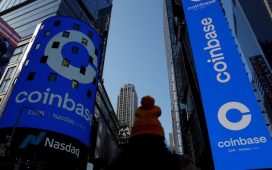This article is an on-site version of our Unhedged newsletter. Sign up here to get the newsletter sent straight to your inbox every weekday
Good morning. I’m rooting for Jane Fraser, Citigroup’s chief executive. The Financial Times reported yesterday that she has told employees that if they are not on board with her overhaul of the bank, they should “get off the train”. Citi has been a mess almost since Sandy Weill put it together. If Fraser is truly ready to break some furniture and take some risks to clean it up, she deserves applause. Email me: robert.armstrong@ft.com.
Is anti-ESG investing as useless as ESG investing?
It is the strongly held view of this newsletter that ESG investing is well- intentioned, confused, utterly ineffective and probably harmful. It does not change corporate behaviour for the better, cannot offer investors consistently better returns, is not a good risk-management strategy, extracts fees from investors and hands them to financiers, lawyers and consultants, is anti-democratic and creates a pernicious distraction from the things that do change corporate behaviour, such as consumer boycotts and regulatory action.
But if ESG investing is dumb, does that make anti-ESG investing smart? Is ESG investing a trade that investors should get on the opposite side of?
A few people seem to think so, as a Morningstar report published this summer explains. The report identified 27 investment funds as anti-ESG, together managing $2.1bn as of the first quarter of this year. This is just a speck relative to the money management industry, but it is not quite nothing.
Morningstar places the anti-ESG funds into various categories: funds that invest in “vice” stocks, like gun and tobacco makers; funds with explicitly conservative values; funds that once followed ESG principles but have since renounced them; passive funds that vote against ESG-driven shareholder proposals; and true “anti-ESG” funds that buy companies with low ESG scores on the grounds that they are undervalued (alas, the only fund in this last and most interesting category filed to liquidate in June).
The arguments that have been made in this column about ESG’s failure to change corporate behaviour and therefore the world (see the links in the first paragraph) must apply equally well to anti-ESG investing. If you despise the outcomes ESG investing aims at (lower carbon emissions, workers rights, independent corporate boards and so on) investing in an anti-ESG fund won’t foil those outcomes, just as ESG investing won’t promote them. The only interesting question is whether the anti-ESG funds might outperform, as a result of avoiding the structural mistakes and confusions embedded in ESG investing.
There are two reasons I can think of for why this might happen.
Suppose enough investors pile into ESG-positive stocks and out of ESG-negative stocks that the ESG-negative ones trade at a discount (this is a key mechanism by which ESG investing aims to create change). Then buying the ESG-negative stocks is a good idea, even if the discount never closes. Investors can buy the stocks cheap, and then insist that the company pay out lots of its profits in dividends or buy back lots of shares, increasing investor returns.
My guess is that ESG investing has not depressed ESG-negative companies’ valuations as of yet, but I’m not sure. I have not seen any good studies on the topic. But the $2.8tn in assets estimated to be managed by ESG funds (according to Morningstar) seems too small relative to the $329tn in global financial assets (according to Boston Consulting) to be moving valuations around much.
Next, it is also possible that ESG-positive companies tend to become bureaucratic messes, and will therefore underperform over time. Modern corporations’ exclusive focus on shareholder returns has encouraged the flow of capital into productive companies and given those companies an effective organising principle. Perhaps companies that put stakeholders — employees, fellow citizens and so on — on par with shareholders lose focus and underperform. I have no idea if this is true, and it is probably hard to find out, but there is a logic to it.
The proof of the pudding may have to be in the eating. Unfortunately, given that most anti-ESG funds are quite small, have not been around for long and pursue quite varied strategies, there is very little pudding to eat and it is still undercooked. Here are the one-year returns from a sample of them, plus the S&P 500:

The standout performer, the God Bless America ETF, picks mid- and large-cap stocks by first excluding “companies that make left-leaning public statements about political issues unrelated to the company’s business”, and then choosing among the remaining companies according to financial fundamentals. A formula for success? Hard to say: it has just $46mn in assets and its largest positions, worth 15 per cent of the fund, are Nvidia and Tesla. At Unhedged, we patriotically await more data.
The rates-duration-tech stocks argument is impossible to kill, but let’s try one more time
Incoherence causes some beliefs to go extinct. Others, for reasons that are not totally clear, survive and reproduce despite it. An example of the latter case is the belief that higher interest rates should hurt growth stocks more than value stocks. From The Wall Street Journal yesterday, in an article called “Why Are Tech Stocks Down? Bond Yields Are Up”:
Rising yields have hit tech stocks particularly hard, because those companies’ future profits are worth less relative to the risk-free returns from holding Treasurys to maturity.
This argument is well known. Higher interest rates mean that a higher discount rate is applied to companies’ expected future profits. The further in the future those profits are, the more that higher discount rate bites into present values. Growth stocks, such as the big techs, have a larger proportion of their profits in the far future, compared to value stocks. Therefore, when rates rise, growth stocks will fall more than value stocks.
The problem with the argument is, or should be, well known. Long-term interest rates change for various reasons, most importantly because of monetary policy and the outlooks for growth and inflation. If rates are rising because the growth outlook is stronger, then while the discount rate rises, profits should rise too. This is an offsetting effect. And, according to the WSJ, rates are rising at present precisely because growth is picking up:
The major force behind the bond market moves? A robust U.S. economy that continues to grow despite the Federal Reserve’s fastest interest-rate increases in decades. The result is that some investors are betting that the Fed will leave rates high for years to come
It could be that the effect of a higher discount rate and higher profits are asymmetrical, and that the discount rate effect is a lot stronger. But the big problem isn’t that the theory doesn’t make sense. It’s that it doesn’t match the data. The WSJ again:
Behemoths such as Amazon.com and Apple have slid 6.4% and 7% in September, respectively, after logging big gains earlier in the year. The tech-heavy Nasdaq Composite is down 5.9%
Here’s a chart of Amazon, Apple and the Nasdaq in September. I’ve added Nvidia, too, on the grounds that it is the growthiest of all tech stocks:

These declines coincide with a September jump in (for example) 10-year yields from 4.09 per cent to 4.54 per cent, and with a spreading “higher for longer” narrative among analysts and the financial press. And it was the growthiest tech of all, Nvidia, which got hit hardest. But consider the period from April 6 to August 21 of this year, a period during which the 10-year rose by more than a full percentage point:

In this earlier period, rates rose a lot and growth stocks rose a lot, too. And no, value stocks did not do even better. They underperformed. So at the very least something else is going on here besides just rising discount rates. Maybe we need more factors in the model. Maybe growth stocks underperform when expectations for monetary policy shift, or when inflation expectations change, or some other variable related to but not identical with rate levels. But I can’t make any of these work well, either (maybe some smart reader can?). In any case, the rates-up-growth-stocks-underperform theory, in its simple form, is wrong and getting wronger.
One good read
Zombie private equity funds.
FT Unhedged podcast

Can’t get enough of Unhedged? Listen to our new podcast, hosted by Ethan Wu and Katie Martin, for a 15-minute dive into the latest markets news and financial headlines, twice a week. Catch up on past editions of the newsletter here.










